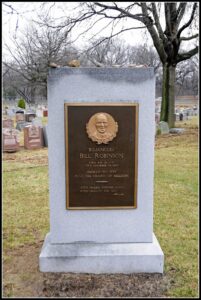Flag of Scotland

17th Century depiction of Malcolm II
On this day in 1034, King of Scots from 1005 to 1034, Máel Coluim mac Cináeda (Modern Gaelic: Maol Chaluim mac Choinnich), Malcolm II, died at Glamis, a small village in Angus, Scotland (the location of Glamis Castle, the childhood home of Queen Elizabeth the Queen Mother). The son of Kenneth II King of Scots. He was succeeded by his grandson Donnchad mac Crínáin, Duncan I.
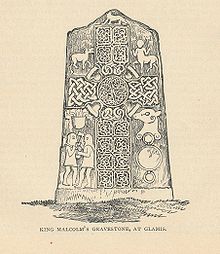
19th Century engraving of King Malcolm II’s grave stone
The Final Footprint – Malcolm II is interred in what is now the ancient burial ground, the Rèilig Odhrain (Oran’s burial place or cemetery) of Iona Abbey. None of the graves are now identifiable; their inscriptions reportedly had worn away by the end of the 17th century. Iona rose to prominence in Scotland following the establishment of the Kingdom of Alba, Gaelic for Scotland, in the later 9th century. The ruling dynasty of Alba traced its origin to Iona, and the island thus became an important spiritual centre of the new kingdom, with many of its early kings buried there. Tradition knew the Pictish stone now called “Glamis 2” as “King Malcolm’s grave stone”. The stone is a Class II stone, apparently formed by re-using a Bronze Age standing stone. Its dating is uncertain, with dates from the 8th century onwards having been proposed. While an earlier date is favoured, an association with accounts of Máel Coluim’s has been proposed on the basis of the iconography of the carvings.
 On this day in 1763, author Abbé Prévost died at the age of 66 in Chantilly, France. Born Antoine François Prévost d’Exiles on 1 April 1697 at Hesdin, Artois. While living in the Hague, he engaged on a translation of De Thou’s Historia, and, relying on the popularity of his first book, published at Amsterdam a Suite in three volumes, forming volumes v, vi, and vii of the original Mémoires et aventures d’un homme de qualité. The seventh volume contained the famous Manon Lescaut, separately published in Paris in 1731 as Histoire du Chevalier des Grieux et de Manon Lescaut. The book was eagerly read, chiefly in pirated copies, being forbidden in France. Puccini‘s opera, Manon Lescaut is based on the novel.
On this day in 1763, author Abbé Prévost died at the age of 66 in Chantilly, France. Born Antoine François Prévost d’Exiles on 1 April 1697 at Hesdin, Artois. While living in the Hague, he engaged on a translation of De Thou’s Historia, and, relying on the popularity of his first book, published at Amsterdam a Suite in three volumes, forming volumes v, vi, and vii of the original Mémoires et aventures d’un homme de qualité. The seventh volume contained the famous Manon Lescaut, separately published in Paris in 1731 as Histoire du Chevalier des Grieux et de Manon Lescaut. The book was eagerly read, chiefly in pirated copies, being forbidden in France. Puccini‘s opera, Manon Lescaut is based on the novel.
The Final Footprint – unknown
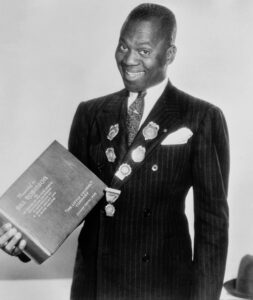 On this day in 1949 tap dancer, actor, and singer, the best known and the most highly paid African-American entertainer in the United States during the first half of the 20th century, “Bojangles” Bill Robinson died from heart failure in New York City, aged 71. Cemetery of the Evergreens, Brooklyn.
On this day in 1949 tap dancer, actor, and singer, the best known and the most highly paid African-American entertainer in the United States during the first half of the 20th century, “Bojangles” Bill Robinson died from heart failure in New York City, aged 71. Cemetery of the Evergreens, Brooklyn.
His long career mirrored changes in American entertainment tastes and technology. His career began in the age of minstrel shows and moved to vaudeville, Broadway theatre, the recording industry, Hollywood films, radio, and television.
Cemetery of the Evergreens, Brooklyn
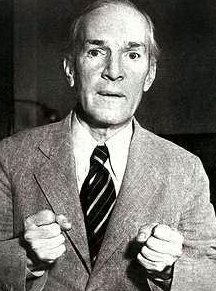 On this day in 1968, writer Upton Sinclair died in a nursing home in Bound Brook, New Jersey at the age of 90. Born Upton Beall Sinclair Jr. on September 20, 1878 in Baltimore, Maryland. Sinclair’s work was well known and popular in the first half of the 20th century, and he won the Pulitzer Prize for Fiction in 1943.
On this day in 1968, writer Upton Sinclair died in a nursing home in Bound Brook, New Jersey at the age of 90. Born Upton Beall Sinclair Jr. on September 20, 1878 in Baltimore, Maryland. Sinclair’s work was well known and popular in the first half of the 20th century, and he won the Pulitzer Prize for Fiction in 1943.
In 1906, Sinclair acquired notoriety for his classic muck-raking novel The Jungle, which exposed labor and sanitary conditions in the U.S. meatpacking industry, causing a public uproar that contributed in part to the passage a few months later of the 1906 Pure Food and Drug Act and the Meat Inspection Act. In 1919, he published The Brass Check, a muck-raking exposé of American journalism that publicized the issue of yellow journalism and the limitations of the “free press” in the United States. Four years after publication of The Brass Check, the first code of ethics for journalists was created. Time magazine called him “a man with every gift except humor and silence”. He is also well remembered for the line: “It is difficult to get a man to understand something, when his salary depends upon his not understanding it.” He used this line in speeches and the book about his campaign for governor as a way to explain why the editors and publishers of the major newspapers in California would not treat seriously his proposals for old age pensions and other progressive reforms.
Writing during the Progressive Era, Sinclair describes the world of industrialized America from both the working man’s and the industrialist’s points of view. Novels such as King Coal (1917), The Coal War (published posthumously), Oil! (1927), and The Flivver King(1937) describe the working conditions of the coal, oil, and auto industries at the time.
The Flivver King describes the rise of Henry Ford, his “wage reform”, and the company’s Sociological Department to his decline into antisemitism as publisher of The Dearborn Independent. King Coal confronts John D. Rockefeller Jr., and his role in the 1913 Ludlow Massacre in the coal fields of Colorado.
Sinclair was an outspoken socialist and ran unsuccessfully for Congress as a nominee from the Socialist Party. He was also the Democratic Party candidate for Governor of California during the Great Depression, running under the banner of the End Poverty in California campaign, but was defeated in the 1934 elections.
In April 1900, Sinclair went to Lake Massawippi in Quebec to work on a novel. He had a small cabin rented for three months and then he moved to a farmhouse. Here, his future wife, Meta Fuller, and he became close. She was three years younger than him and had aspirations of being more than a housewife. Sinclair gave her direction as to what to read and learn. Meta had been a childhood friend whose family was one of the First Families of Virginia. Each had warned the other about themselves and would later bring that up in arguments. They married October 18, 1900. Meta and her family tried to get Sinclair to give up writing and get “a job that would support his family.” Around 1911, Meta left Sinclair for the poet Harry Kemp, later known as the “Dunes Poet” of Provincetown, Massachusetts.
In 1913, Sinclair married Mary Craig Kimbrough (1883–1961), a woman from an elite Greenwood, Mississippi, family. She had written articles and a book on Winnie Davis, the daughter of Confederate States of America President Jefferson Davis. He met her when she attended one of his lectures about The Jungle. In the 1920s, the Sinclair couple moved to California. They were married until her death in 1961. Sinclair married again, to Mary Elizabeth Willis (1882–1967).
Sinclair was opposed to sex outside of marriage and he viewed marital relations as necessary only for procreation. He told his first wife Meta that only the birth of a child gave marriage “dignity and meaning”. Despite his beliefs, he had an adulterous affair with Anna Noyes during his marriage to Meta. He wrote a novel about the affair called Love’s Progress, a sequel to Love’s Pilgrimage. It was never published. His wife next had an affair with John Armistead Collier, a theology student from Memphis.
Late in life Sinclair, with his third wife Mary Willis, moved to Buckeye, Arizona. They returned east to Bound Brook, New Jersey.
 The Final Footprint
The Final Footprint
He is buried in Rock Creek Cemetery in Washington, DC, next to Willis. Other notable final footprints at Rock Creek include; Tim Russert and Gore Vidal.
 On this day in 1973, actor Laurence Harvey died from stomach cancer in Hampstead, London at the age of 45. Born Laruschka Mischa Skikne on 1 October 1928 in Joniškis, Lithuania. In a career that spanned a quarter of a century, Harvey appeared in stage, film and television productions primarily in the United Kingdom and the United States. His performance in Room at the Top (1959) resulted in an Academy Award nomination. That success was followed by the role of William Barret Travis in The Alamo (1960), and as the brainwashed Raymond Shaw in The Manchurian Candidate (1962).
On this day in 1973, actor Laurence Harvey died from stomach cancer in Hampstead, London at the age of 45. Born Laruschka Mischa Skikne on 1 October 1928 in Joniškis, Lithuania. In a career that spanned a quarter of a century, Harvey appeared in stage, film and television productions primarily in the United Kingdom and the United States. His performance in Room at the Top (1959) resulted in an Academy Award nomination. That success was followed by the role of William Barret Travis in The Alamo (1960), and as the brainwashed Raymond Shaw in The Manchurian Candidate (1962).
Early in his career, Harvey reportedly had a live-in relationship with actress Hermione Baddeley (who appeared in a supporting role in Room at the Top, for which she was nominated for an Academy Award for Best Supporting Actress). He left Baddeley in 1951 for actress Margaret Leighton, who was then married to publisher Max Reinhardt. Leighton and Reinhardt divorced in 1955, and she married Harvey in 1957 off the Rock of Gibraltar. The couple divorced in 1961. In 1968 he married Joan Perry, the widow of film mogul Harry Cohn. Her marriage to Harvey lasted until 1972. His third marriage was to British fashion model Paulene Stone. She gave birth to Domino in 1969, while he was still married to Perry. Harvey and Stone married in 1972. The wedding took place at the home of Harold Robbins.
After working in two films with her, Harvey remained friends with Elizabeth Taylor for the rest of his life. She visited him three weeks before he died. Upon his death, Taylor issued the statement, “He was one of the people I really loved in this world. He was part of the sun. For everyone who loved him, the sun is a bit dimmer.”
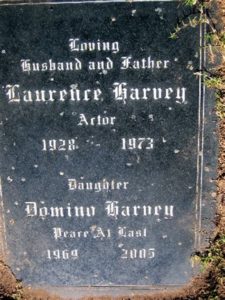 The Final Footprint
The Final Footprint
Domino, who later became a bounty hunter, was only four years old at the time of his death. She died at the age of 35 in 2005 after overdosing on painkillers. They are buried together in Santa Barbara Cemetery in Santa Barbara, California. Taylor and Peter Lawford held a memorial service for Harvey.
#RIP #OTD in 1998 comedian (The Devil Made Me Buy This Dress) and actor (The Flip Wilson Show) Flip Wilson died from liver cancer in Malibu, aged 64. He was cremated at Westwood Village Memorial Park Cemetery and his cremated remains were scattered off Malibu Beach.
#RIP #OTD in 2016 revolutionary, lawyer, leader of Cuba from 1959 to 2008, Fidel Castro died in Havanna, aged 90. Cremation with cremated remains entombed in the Santa Ifigenia Cemetery in Santiago de Cuba.
#RIP #OTD in 2020 Argentine professional football player, manager, 3x World Cup Champion Diego Maradona died; cardiac arrest in his sleep at his home in Dique Luján, Buenos Aires Province, aged 60.
Jardín de Bella Vista cemetery, Bella Vista, Buenos Aires.
Have you planned yours yet?
Follow TFF on twitter @RIPTFF

